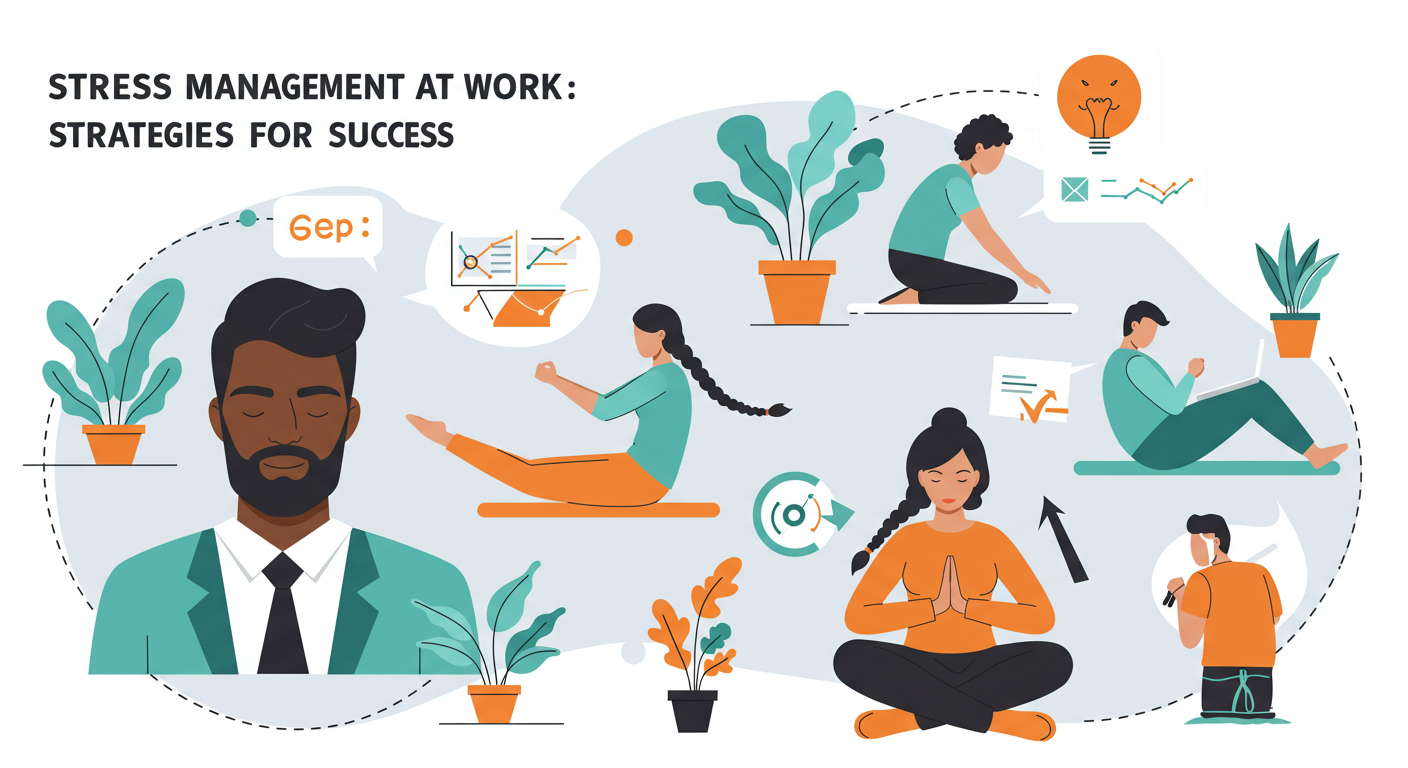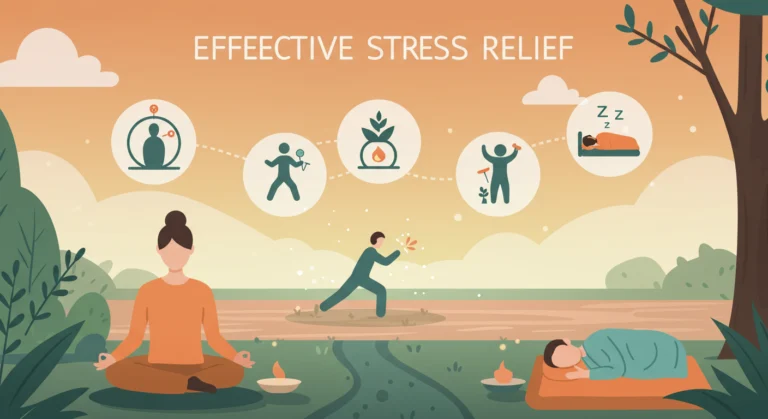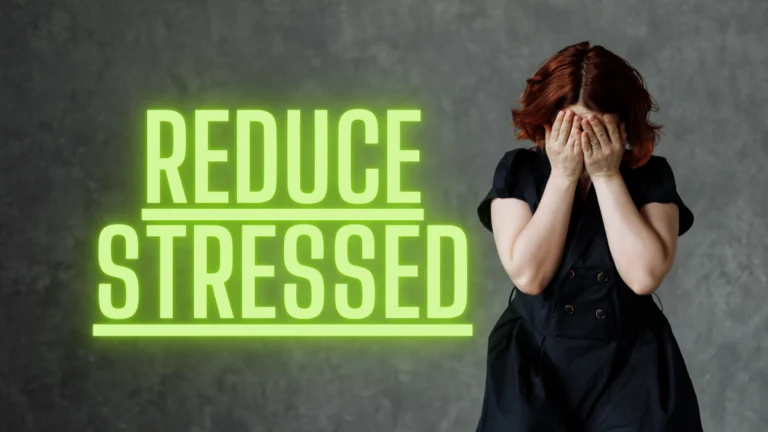Stress Management at Work: Strategies for Success

Have you ever felt your heart race as deadlines pile up? Or noticed how constant emails make it hard to breathe between meetings? Many of us know that heavy feeling—the one where long hours and mounting tasks chip away at our energy. Let’s talk about why this matters in the context of Stress Management at Work… and how we can fix it together.
Take David, a project manager who skipped lunches to meet targets. Or Theresa, a nurse whose shifts left her exhausted. Their stories aren’t unique. Research shows 1 in 3 employees face similar challenges daily, according to NIOSH data. The cost? Burnout, strained relationships, and even chronic health issues.
But here’s the good news: More companies now see supporting teams as a priority. From flexible schedules to mindfulness workshops, employers are stepping up. And when personal habits meet organizational change? That’s where real transformation happens.
Key Takeaways
- Job demands impact both mental and physical health over time.
- Employers increasingly recognize the value of wellness programs.
- A mix of individual and company-level strategies works best.
- Small daily adjustments can prevent long-term burnout.
- Healthy workplaces boost productivity and morale.
Ready to explore solutions that fit your life? Let’s dive into practical steps anyone can take—whether you’re leading a team or navigating a hectic role yourself. Better days start here.
Table of Contents
- Identifying the Causes of Workplace Stress
- Understanding the Impact of Stress on Health and Productivity
- Implementing Stress Management at Work Solutions
- How to Develop a Comprehensive Stress Prevention Program
- Adopting a Culture of Wellbeing and Employee Support
- Conclusion
- FAQ
- What typically causes anxiety in professional settings?
- How does chronic pressure affect physical health?
- What immediate steps reduce tension during busy periods?
- How can teams create effective wellbeing plans?
- Why do leadership attitudes impact staff resilience?
- Can small daily changes really improve mental health long-term?
Identifying the Causes of Workplace Stress
Ever notice how some days feel like climbing a mountain… while others flow smoothly? The difference often lies in hidden pressures we don’t always name. Let’s unpack why certain situations drain energy more than others.
Individual and Organizational Factors
Take Maya, a designer who thrives under tight deadlines. Her colleague Sam? He gets overwhelmed by the same tasks. Why? Personal traits like problem-solving style and job expectations shape our reactions. NIOSH research confirms this: 43% of workers cite mismatched roles as a top strain.
Common Workplace Triggers
High demands with low control create a pressure cooker. Imagine nurses juggling patient care during staff shortages—or sales teams facing unclear quarterly goals. These scenarios spark frustration. “When communication breaks down, even small tasks feel impossible,” notes a recent employee survey.
Does your role involve conflicting priorities? Maybe you’ve faced last-minute changes without proper tools. These structural gaps—like lack of support or unrealistic timelines—chip away at focus. Recognizing them is step one toward change.
Understanding the Impact of Stress on Health and Productivity
How many days this week did your shoulders stay tense after clocking out? That lingering tightness tells a story. While temporary challenges can sharpen focus, ongoing strain rewires our bodies in dangerous ways.
The Two Faces of Tension
Quick deadlines might give you a productive adrenaline rush. But when demands never ease? Cortisol levels stay elevated, weakening immunity over time. Studies show workers with chronic tension take 50% more sick days annually.
Silent Threats in Daily Routines
Persistent strain doesn’t just cause headaches. It’s linked to:
- Heart disease risks rising 40% in high-pressure roles
- Back pain from constant muscle tension
- Sleep cycles disrupted by racing thoughts
A nurse we spoke with admitted:“I didn’t realize my irregular heartbeat was job-related until my doctor connected the dots.”
Performance Costs Add Up
Forgetfulness. Missed details. Burned-out teams make 60% more errors according to safety reports. One factory manager found medication mistakes tripled during peak workload periods. Productivity isn’t just about hours logged—it’s about sustained focus.
What’s your body trying to tell you? Listening early could protect both your health and your ability to thrive in your role.
Implementing Stress Management at Work Solutions

What if tight deadlines didn’t leave you drained? The answer lies in pairing personal strategies with smarter workplace design. Let’s explore solutions that protect both health and performance.
Start by assessing daily patterns. A logistics company reduced burnout 30% by letting teams adjust shift swaps. “Giving people control over their schedules was transformative,” their HR director shared. Simple changes like clearer task instructions or buffer time between meetings often yield quick wins.
Employers play a crucial role. Effective programs combine training (like time management workshops) with structural fixes. One tech firm revamped project timelines after discovering 70% of employees felt rushed. Result? Missed deadlines dropped by half.
Don’t underestimate communication upgrades. Nurses at a Chicago hospital used brief daily huddles to redistribute urgent tasks. This cut overtime hours while improving care quality. Such tweaks prove that small investments in resources create ripple effects.
Ready to begin? Audit one pain point this week—maybe email overload or unclear priorities. Solutions exist when we align individual needs with organizational flexibility. Your team’s energy is worth the effort.
How to Develop a Comprehensive Stress Prevention Program

Building a sustainable approach to workplace challenges starts with intentional design. Like constructing earthquake-resistant buildings, effective programs combine strong foundations with adaptive systems. Let’s explore how to create strategies that address root causes while evolving with team needs.
Step-by-Step Intervention Strategies
Begin by mapping pain points through anonymous surveys. A logistics company discovered 68% of staff felt workload imbalances caused friction. Their solution? Rotating high-intensity tasks weekly. “Involving frontline teams in planning built trust fast,” their operations lead noted.
Next, blend quick fixes with cultural shifts. For example:
– A hospital introduced 10-minute stretch breaks between shifts (immediate relief)
– Revised promotion criteria to value collaborative skills over solo heroics (long-term change)
Evaluation and Continuous Improvement
Measure what matters. Track metrics like:
– Sick day frequency
– Project completion rates
– Voluntary participation in wellness activities
A tech startup reduced missed deadlines by 40% after quarterly feedback sessions. Their secret? Letting employees define success metrics. “People shared ideas we’d never considered,” admitted one manager.
Ask regularly: “Where does our system create unnecessary pressure?” and “How can we redistribute resources smarter?” True progress happens when organizations treat well-being as a living process—not a checkbox.
Adopting a Culture of Wellbeing and Employee Support
What does it look like when care becomes part of a company’s DNA? Imagine workplaces where teams don’t just survive challenges—they thrive through them. Research shows organizations prioritizing well-being see 37% fewer sick days and 21% higher output. Let’s explore how to build this foundation together.
Empowering Managers and Building Support Systems
Managers set the rhythm. When they model balanced habits—like taking mental health days—teams follow. A Boston insurance firm trained leaders in active listening techniques. Result? 45% fewer burnout reports within six months. “Our weekly check-ins became lifelines,” shared one team member.
Practical steps for lasting change:
- Peer mentoring programs pairing experienced staff with newcomers
- Flexible “reset days” for recharging without using vacation time
- Apps offering guided breathing exercises during breaks
Success starts small. A Midwest tech company redesigned break rooms as quiet zones with plants and natural light. Collaboration improved while errors dropped 18%. These changes prove environments shape ability to manage pressures effectively.
True cultural shifts require commitment from all levels. Employers providing training budgets for stress management courses see 3x higher participation. But it’s not just about programs—it’s about daily choices. Could your next team meeting start with a well-being check-in? Let’s create spaces where people feel heard… and helped.
Conclusion
What if your job could fuel your energy instead of draining it? We’ve explored how balancing personal habits with organizational support creates healthier work environments. When teams address both individual needs and systemic gaps—like unrealistic deadlines or poor communication—they build resilience that benefits everyone.
Remember, there’s no universal fix. A nurse might thrive with peer debriefs, while a developer needs flexible hours. The key? Start small. Try a five-minute breathing exercise before meetings… or suggest rotating high-pressure tasks across your team. These tweaks add up.
Creating a supportive culture isn’t a checkbox—it’s a shared journey. Managers modeling boundaries, companies investing in sleep education, colleagues checking in—these choices reshape daily experiences. Research proves it: teams that prioritize mental health see fewer errors and higher morale.
What’s one pressure point you can ease this week? Maybe redefine “urgency” on projects… or share lunch breaks with coworkers. Together, we can transform challenges into stepping stones—for healthier lives and more fulfilling careers.
And to learn more about how to improve your life, check out other articles on TipsAndWellness.com
You can also search for more related content on American Psychological Association
FAQ
What typically causes anxiety in professional settings?
Heavy workloads, unclear expectations, and tight deadlines often create tension. Lack of control over tasks or poor communication between teams can also fuel frustration. Even factors like noise levels or interpersonal conflicts play a bigger role than many realize.
How does chronic pressure affect physical health?
Prolonged strain weakens immunity and disrupts sleep patterns, increasing risks for heart disease and digestive issues. Many don’t realize that persistent headaches or fatigue are often warning signs demanding attention before conditions worsen.
What immediate steps reduce tension during busy periods?
Start with micro-breaks—even 90 seconds of deep breathing resets focus. Prioritize tasks using the “urgent vs. important” grid, and delegate when possible. Openly communicating capacity limits with supervisors prevents overload before it escalates.
How can teams create effective wellbeing plans?
Begin with anonymous surveys to identify pain points like unrealistic deadlines or insufficient resources. Combine flexible scheduling with training on time-blocking techniques. Regular check-ins and adjusted goals keep strategies aligned with evolving needs.
Why do leadership attitudes impact staff resilience?
Managers who model boundaries—like not sending late emails—encourage healthier habits company-wide. Teams thrive when leaders actively listen, provide growth opportunities, and normalize using mental health days without stigma.
Can small daily changes really improve mental health long-term?
Absolutely. Simple acts like lunchtime walks or gratitude journaling rewire stress responses over time. Pairing these with clear work-life separation—such as silencing notifications post-shift—builds sustainable habits that protect overall wellbeing.
Discover more from Tips and Wellness
Subscribe to get the latest posts sent to your email.






